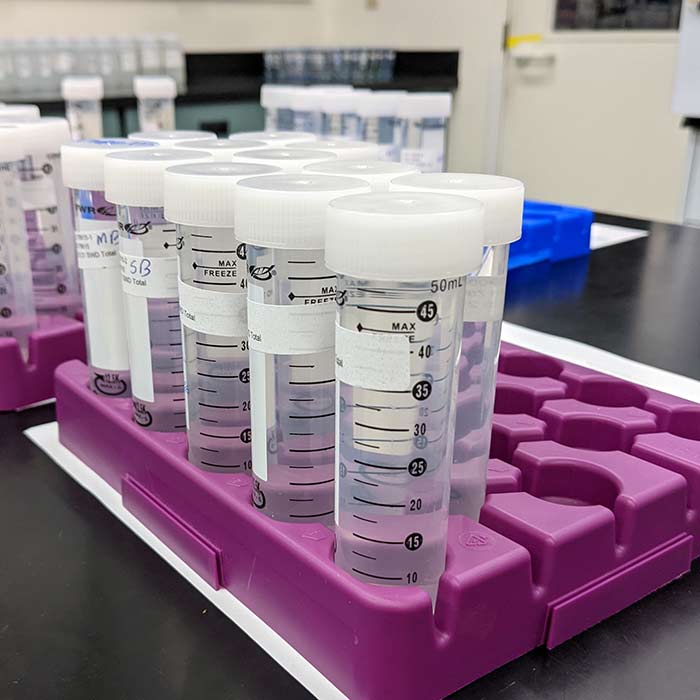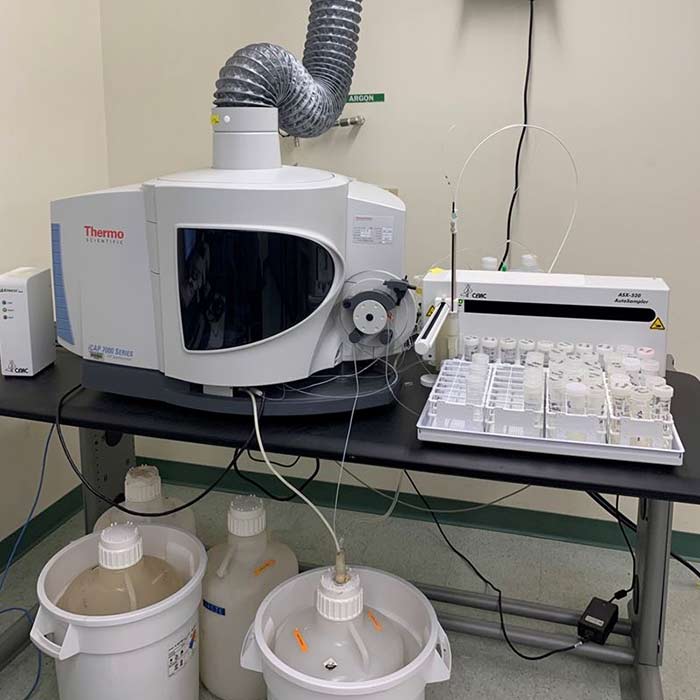Trace Metals Unit
We test environmental, wastewater, and industrial samples for more than 30 different metals, including:
- Calcium, magnesium, zinc, and copper (essential nutrients at low levels but can be harmful at higher levels).
- Arsenic, lead, mercury, and cadmium (toxic even at low levels).
Trace metals testing
We use specialized instruments called Inductively Coupled Plasma Mass Spectrometers (ICPMS) and other sensitive tools to test for tiny amounts of these metals in water and soil samples.
Additionally, we test for mercury at six different ranges. This includes ultra-trace level testing which requires a special clean room and is not widely available. Our scientists use this extra-sensitive testing to detect metals that can be toxic at very low levels. We are always working on new methods that make these tests more sensitive.
Trace metals and public health
The data from these tests help to gauge potential health risks to people and the environment. For example, policy- and lawmakers can use these data to track metals of concern at local and national levels. Our data help to protect public and environmental health from metals pollution.

To learn more about trace metals, why they can be harmful, and how they get into the environment, please visit these websites:
EPA – Clean Water Act Analytical Methods
Occupational Safety and Health Administration – Toxic Metals


 Translate
Translate